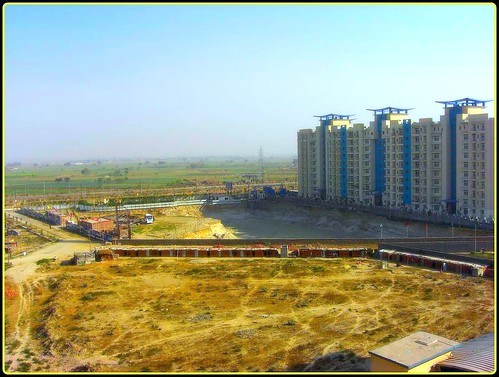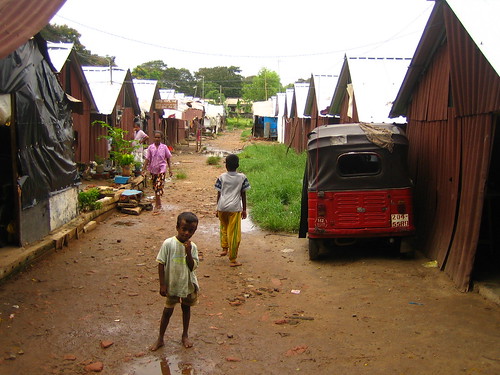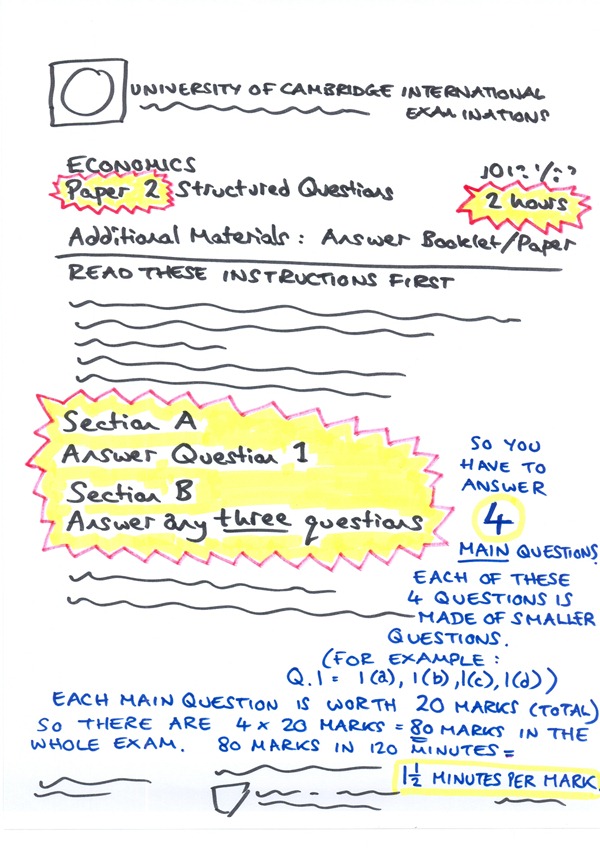IGCSE Economics

Demand Revisited
Oct 25th
This post is to add further resources on the concept of demand, for those who wish to follow up on this absolutely essential concept in Economics. First, however, I recommend you use the resources on this post to learn about demand:
1) Videos
What is a demand curve? by 
Note – I think part of his second to last sentence should state “… the basic relationship between quantity demanded and changes in price …”
Deriving a demand curve, given a demand schedule by FreeEconHelp
Demand curve video by jessicaweldon22
Note – at one point she claims the market is the whole planet’s population, but we can talk about more specific, smaller markets than that. E.g. the market for cars in Thailand.
The Demand Curve Part 1 by milespritchardecon1
The Demand Curve Part 2: Shifts In Demand by milespritchardecon1
Change in demand / change in quantity demand by vaacon1
Various factors (short clips) affecting demand by vaacon1:
The diagrams are quite hard to see on the whiteboard, but the explanations and examples are clear.
Demand shifts – prices of related goods
Demand shifts – expectations of future prices
Demand shifts – Income
Demand shifts – Number of buyers
Demand shifts – Preferences
As he adds, in text, part way in, he makes a mistake early on and mentions shifts in supply, when he is actually discussing shifts in demand.
2) Interactive Activities
A Demand Curve (imperial.ac.uk)
Animated Economics – Demand Curves
John Wiley Economics – Shift Versus Movement Along The Demand Curve
Demand by yknot.terapad.com
Graphing The Demand Curve (glecnoe.com)
Economic Systems
Sep 1st
The three fundamental economic questions:
- What to produce?
- How to produce?
- For whom to produce?
There are three economic systems, we will concentrate for now on the first three:
- Traditional Economy
- Market Economy
- Command or Planned Economy
- Mixed Economy (we will study this later)
Study one of the first three, collaborate with others in a group, and produce something (presentation / video / report) to explain it in as simple terms as possible. Be warned, many of the websites listed below are very complicated. So, as well as these, use your text books, own general research, your teacher if possible, and each other. Make sure you divide your work up fairly between the members of your group.
Here are some guiding questions:
- What is this type of economy?
- How does it answer the three fundamental economic questions? How does it work?
- Who uses a this type of economy? In what parts of the world are they found? Give examples.
- Advantages of a this type of economy?
- Disadvantages of this type of economy?
Traditional Economy
Click here to see some useful websites for researching about traditional economies.
Market Economy
Click here to see some useful websites for researching about market economies.
Power of the Market – Invisible Hand by LibertyPen
Command (or Planned) Economy
Click here to see some useful websites for researching about command (also known as ‘planned’) economies.
General
Click here to see some useful websites which refer to more than one of the economic systems, usually to compare them.
Economics :: Week 11, Part C by icarpcast
If you find any more good websites please email them to me … james@opengecko.com
Calculating Inflation
Aug 31st
2 handy and thorough videos. The first by pajholden takes a UK perspective:
inflation rates – how they are calculated
Secondly, ACDCLeadership takes a US slant:
This one by Mindbitesdotcom is good on the key differences between the GDP deflator and Consumer Price Index, and the way that different approaches to calculating an index can lead to different values (good for evaluation):
Basic Economic Problem–Part 2
Aug 25th
We are still introducing some important concepts (ideas) in Economics while following the IGCSE Economics Syllabus which includes the following requirements:
• define opportunity cost and analyse particular circumstances to illustrate the concept;
• evaluate the implications of particular courses of action in terms of opportunity cost.
Here are two videos designed to introduce the idea of opportunity cost:
Episode 8: Opportunity Cost by mjmfoodie
This light-hearted YouTube clip reinforces the fact that it need not be about money, but that cost in this sense can be measured in time:
What Is Opportunity Cost? by wreuter1
This pdf file is a set of resources for teaching the idea of opportunity cost to young children. You might find it useful, especially the first page and the top of the second page which has questions and their answers.
http://www.kidseconposters.com/images/hp_op_cost.pdf
This page from tutor2u gives a useful overview suitable for IGCSE Economics: click here.
Suggested activity
Perhaps working with one other partner, can you create a short video of your own to illustrate the concept of opportunity cost. Try to present several different scenarios, at different scales. Here are some examples:
- An opportunity cost you might face today
- An opportunity cost you might face at the weekend
- An opportunity cost following a recent decsision by your school
- An opportunity cost linked to a decision made by the government for your country
Technology tip:
You could create a video a bit like the mjmfoodie one at the top. One way of doing this is to have a set of slides with pictures and perhaps a few key words in a powerpoint or google presentation. You need a way of recording your voice and capturing things that are happening on the screen at the same time (such as playing through your finished presentation while you speak over it). This is called a screencast. It is a good idea to write a script for your screencast so that the finished product is as professional as possible.
Quicktime allows you to create screencasts. An online solution (which needs you to already have an account for google, twitter, facebook or a few others to sign in is http://www.screenr.com. On the free plan, you are limited to 5 minutes but that should be an ideal maximum time for this kind of activity anyway. At the end you publish to screenr but you can then download the .mp4 file and delete the online version if you want. Screenr requires you to have java enabled.
Basic Economic Problem – Part 1
Aug 21st
We are introducing some important concepts (ideas) in Economics while following the IGCSE Economics Syllabus which has the following requirements:
|
To help us understand these concepts, we can use some very useful youtube videos and some interactive quizzes and other links.
The Economic Problem (Finite Resources and Unlimited Wants)
Needs and Wants by kathycassidy
Needs and Wants by alamberth
A quiz via http://www.businessstudiesonline.co.uk on Needs or Wants – click here.
Scarcity & Choice by mjmfoodie
Notice the definition given of Economics.
The Economic Problem is also nicely summarised here:
Scarcity by stephenmonrad
The above video has already introduced some of the resources we would need to make the things we want. In Economics, resources are referred to as the Factors of Production …
2) The Factors of Production
Resources by mjmfoodie
A very quick summary quiz on factors of production via http://www.dineshbakshi.com – click here
Revise IGCSE Economics
Apr 25th

Image: Some rights reserved by hirejoejohnson
IGCSE and GCSE Economics Section on Dinesh Bakshi’s site.
i-Study Students’ Page – Revision Material includes Interactive Games
i-Study IGCSE Economics main page – click on the section buttons to see revision material
A revision Document can be downloaded here via the The Business –TES wiki
Very, very condensed revision notes (hosted on Bangkok Patana School’s server, but be aware that these notes follow an older syllabus, so check the headings against the current syllabus)

How Long Should You Spend On the IGCSE Economics Paper 2 Questions?
Mar 8th
A very important key to exam success is to get the timings right.
Timings can go wrong in two ways:
- You spend far too little on all questions and have time to spare at the end. If you spend a lot of time doing nothing in your exam, this has a serious ‘opportunity cost’ …
- You take too long on earlier questions, so you don’t leave enough time at the end for later questions and lose valuable marks on these.
You need to use the clock (and a bit of quick mental maths) to your advantage.

Image: Some rights reserved by bastique
Timings
Paper 2 lasts 2 hours.
You have 4 main questions to answer.
You really should stick to 30 minutes per main question.
Each main question is worth 20 marks and is made up of smaller questions. Look at the example below from the specimen paper:
Source: University of Cambridge International Examinations – IGCSE Economics Site
Direct link to specimen paper here
Very important: Section B has 6 main questions to choose from but you only answer 3 of them (giving a total of 60 marks for section B).
You must also answer Question 1 in Section A (worth 20 marks).
The graphic below is a mock up of what the front page of the exam looks like. Check the specimen paper (or any other paper such as the past paper also hosted on the website given above). This graphic highlights the key bits for timings and the words in blue help explain why each mark has one and a half (1.5) minutes for you to spend on it.
You should get in the habit of seeing how many marks a question is worth and then quickly calculating how many minutes you should spend on it. Keep an eye on the clock.
So a smaller 6 mark question deserves 9 minutes of exam time.
Please note that 1 and a half minutes per mark includes reading and checking time.
The shorter 2 or 3 mark questions probably will not need the full 3 or 4.5 minutes. These are often definition questions. They might only take one minute to answer, so you ‘save’ something like two minutes from these questions for your overall reading and checking.
The longer questions 4, 6, 8 or 10 marks (for example) should get their full time from you. So aim to spend a full 6 minutes on a four mark question, etc.
At the very least, stick to timings for the main questions:
Each main question (worth 20 marks each in total) deserves a full 30 minutes from you – no more and no less.
The best way to get all of this is simply to practice past paper questions as often as you can while sticking to the timings. If you do this, you’ll soon get a fell of how much you should be writing on different length questions.
Developed and Developing Economies – Online Resources and Revision Materials
Feb 21st
The full title of this section from the IGCSE syllabus is:
‘Developed and developing economies: trends in production, population and living standards’

Image: Some rights reserved by souravdas
Here is what the syllabus requires of us:
Candidates should be able to:
• describe why some countries are classified as developed and others are not;
• recognise and discuss policies to alleviate poverty;
• describe the factors that affect population growth (birth rate, death rate, fertility rate, net migration) and discuss reasons for the different rates of growth in different countries;
• analyse the problems and consequences of these population changes for countries at different stages of development;
• describe the effects of changing size and structure of population on an economy;
• discuss differences in living standards within countries and between countries, both developed and
developing.
![]() There is a lot of overlap between this section of IGCSE Economics syllabus and the Geography (I)GCSE – if you are studying that subject, you will be able to use some of your Geography notes and resources too. Some of the websites given below are Geography revision pages.
There is a lot of overlap between this section of IGCSE Economics syllabus and the Geography (I)GCSE – if you are studying that subject, you will be able to use some of your Geography notes and resources too. Some of the websites given below are Geography revision pages.

Some rights reserved by godwin d
a) describe why some countries are classified as developed and others are not;
Quite a detailed, interactive site: http://bbc.in/hZmNJh
Note: development is bigger than economci growth. Think of economic growth as a key ingredient of development, a sub set of development. This video by geographyalltheway shows us that development can mean a lot of things:
b) recognise and discuss policies to alleviate poverty;
Aid
Fair Trade
mobiuslive posted an excerpt video from eq.tv on fair trade:
And DiagramConsultores gives us this video on Fair Trade in the Domincan Republic:
Microfinance
Video from Opportunity International:
WorldBank provides an example from Mauritania:
c) describe the factors that affect population growth (birth rate, death rate, fertility rate, net migration)

Image: Some rights reserved by Aidan Jones
d) discuss reasons for the different rates of growth in different countries;
e) analyse the problems and consequences of these population changes for countries at different stages of development;
cheergalsal offers this summary of the Demographic Transition Model:
And geographyalltheway gives us this animated explanation:
http://bbc.in/htA601– and follow the links to the pages that follow this first one
Test your understanding here: http://bit.ly/g9Spcs
f) describe the effects of changing size and structure of population on an economy;
g) discuss differences in living standards within countries and between countries, both developed and developing.

Source: http://www.mint.com/blog/trends/mint-map-global-wealth-distribution/
Development Economics TED Talks
Feb 4th
Here is a selection of TED talk videos which should help when studying Development Economics, and help to provide fresh and sometimes unusual perspectives on the topic. A suggested way of making use of these for your studies is to watch an entire video and summarise its key points in 100 words or under. This is no easy task as there will be lots to say, so you have to select what you think were the key / most interesting points. It is also good to include example detail (regions / countries / place names, dates, and figures) as good examples always help to boost your understanding of development.













